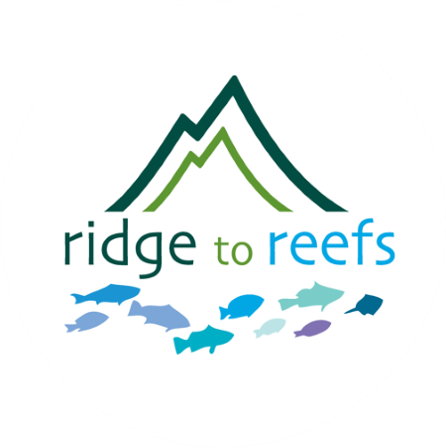Technical Implementation
Initial Conditions
The major source of sediment was eroding from the dirt parking lot and beach access road. The parking lot alone covered approximately 160 m² of exposed sediment.
Stabilizing, Laying in Stone & Posts
The area was stabilized, 60 mᶾ of stone was laid in to slow rainfall runoff, and new fence posts were installed to prevent vehicles from illegally accessing the beach through the restored areas. Boards placed between the posts further helped with stabilization.
Building Swales & Planting Vetiver Grass
Adding swales helps to redirect rainwater flow. Planting rows of vetiver grass - 600 plants in total - further slows runoff, catching sediment and pollutants before they reach the beach.
Building Natural Filtration
Filters made of wood, sand, and gravel catch any runoff that does not filter into the newly stabilized road and parking area. These biofiltration catchments slow runoff and allow time for the sediment to settle out before water reaches the ocean.
Paving & Reforestation
The Municipal Administration of Culebra is planning to complete paving the access road. Reforestation of the access road is part of Phase Two of this project.
Access Delineation
To further protect the newly restored areas, large rocks were put in the way of illegal vehicle access. This supports the newly restored areas taking root and prevents further destabilization.
Habitat Restoration
325 trees and shrubs were planted, including: 100 sea grapes (Cocoloba uvifera), 100 emajagüilla trees (Thespesia populnea), 100 cooperwood (almácigo) seedlings (Bursera simaruba), and 30 icaco bushes (Chrysobalanus icaco L.)
Pedestrian Boardwalk
Several small boardwalks were built to help control and direct foot traffic. This allows pedestrian access to the beach without impacting the newly planted areas.
Completed Restoration
The completed restoration project supports visitation and use of the beach area without negatively impacting the habitat. It also provides for filtration of stormwater runoff and stabilized eroding sediments from the parking lot and access roads. Each of these measures supports the health of the marine ecosystem and the people who rely on and enjoy visiting Tamarindo Beach.










